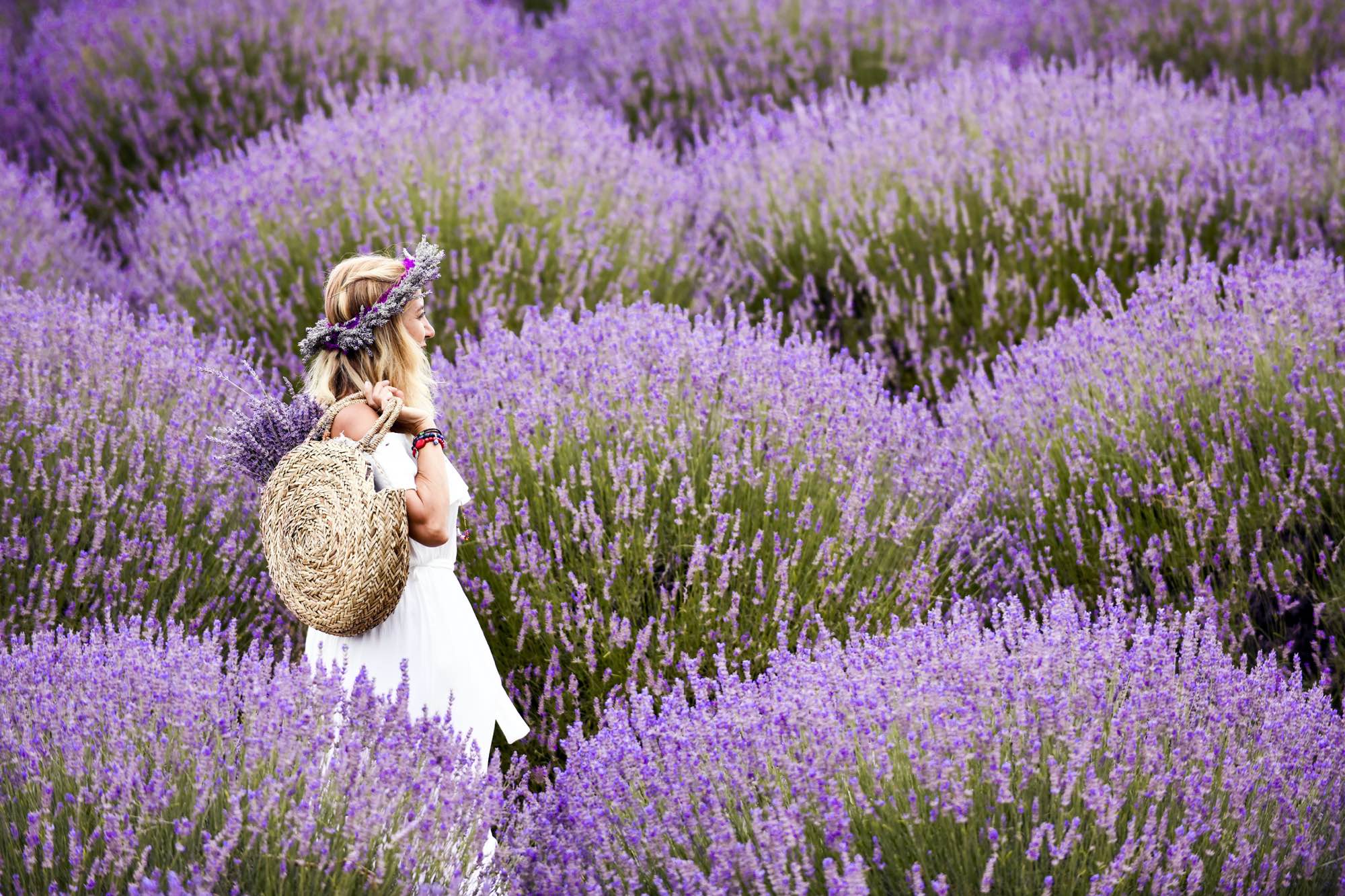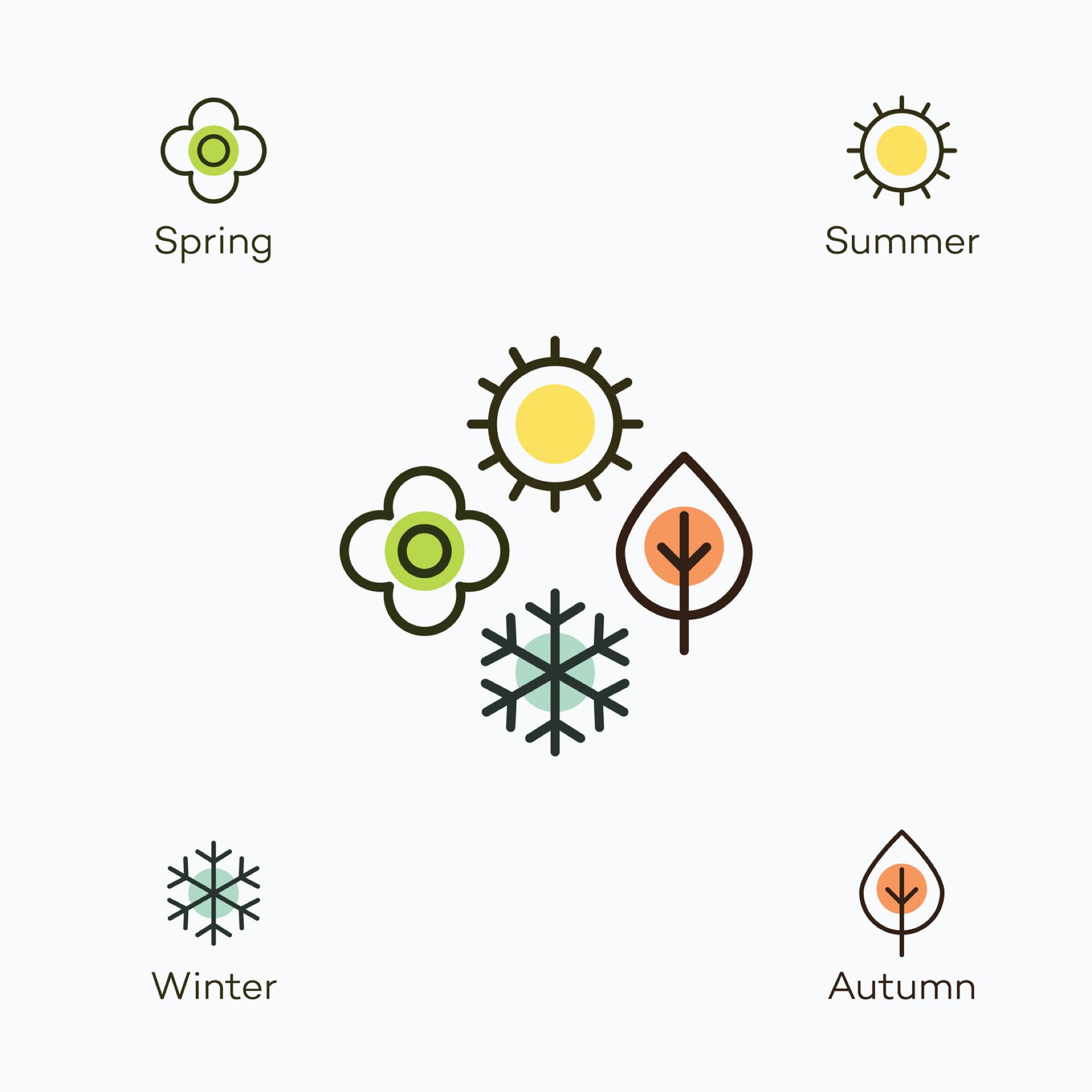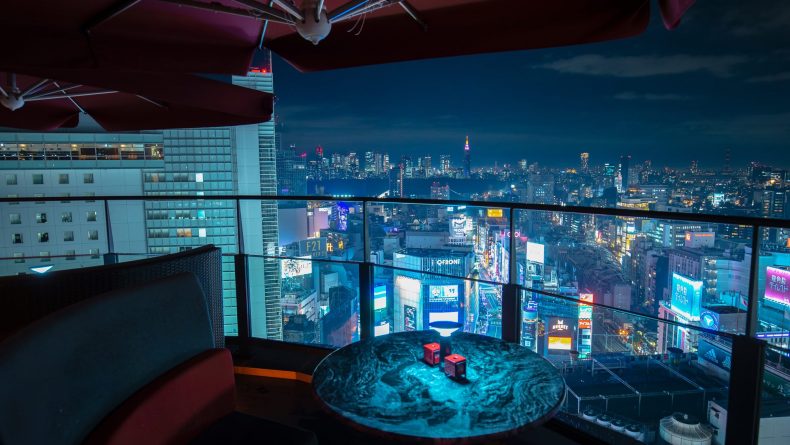How To Find Your Seasonal Color Palette
Are you a Spring, Summer, Autumn or Winter type?
Did you know that your natural coloring corresponds to a season? Read on to find which one is yours, and what colors you should be wearing according to Japanese color experts.
What is your color palette? You might be struggling to find the perfect color combination for your dream wardrobe. But fear no more; seasonal color experts in Japan have a way of helping you choose what to wear or not to wear. Exploding in popularity among Japanese fashionistas, seasonal color analysis—Japan-style—is the answer to your fashion prayers.
The Origin of Seasonal Color Analysis in Japan

Open any Japanese magazine and you’ll see many different profiles: are you a “sweet” or “spicy” type of dresser, is your skin more “blue-based” or “yellow-based,” and Are you a “spring,” “summer,” “autumn,” or “winter” type of person? All of these easy shorthand categories have the same purpose: if you find your best fit, an expert can guide you through the very best clothes and makeup made right for you.
Japan has a knack for taking inspiration from abroad and improving upon these concepts (strawberry shortcake, anyone?). Personal color theory exploded in popularity in the United States in the 1980s, with the publication of books such as Carole Jackson’s Color Me Beautiful (1980).
According to color analysts in Japan and abroad, your best colors—those that will best harmonize with your skin, eye and natural hair colors—can be grouped into the four seasons, a concept dear to Japan. Recently, some have expanded the system to include 12 combination seasonal colors, such as Soft Summer (a mix of Summer and Autumn) or Dark Autumn (a mix of Autumn and Winter).
if you find your best fit, an expert can guide you through the very best clothes and makeup made right for you
In Japan, individuals working as color analysts have been providing wardrobe fixes to private clients and analyzing Japanese celebrities according to the seasonal model. They also post helpful information on how to best dress and wear makeup for your season. Following Japanese color experts on social media, you can even get info on what lip gloss to buy from Opera’s lineup or the best Canmake Perfect Stylist Eyes palette for you just by knowing your “season.”
An Evolutive Color Theory

If you find your season and stick to its colors, you can make magic happen: the dark shadows on your face will recede, your eye color will pop and your skin will look healthier and more luminous!
But, for a long time, the seasonal color analysis was very much a white person’s game. Only very slowly did color consultants start expanding away from the idea that every person of color had to be a Winter—the darkest season. Japanese analysts have been at the forefront of this inclusivity, rightly pointing out that they have been analyzing Japanese women for all four seasons, adapting the theory to color variations that used to mainly naturally occur here in Japan.
Indeed, the best approaches now understand that cool and warm tones (or blue-base and yellow-base in Japan) look different on different skin tones and that not all black hair means the same season (finally!) So, what are you waiting for? Read on to find out your very best “season”!
How To Find Your Own Season: A Guide For All Skin Tones
1. Cool or Warm
The first thing to figure out is whether you are a cool tone (Summer and Winter seasons) or a warm tone (Spring and Autumn seasons).
- Do you look better in silver (cool) or gold (warm) accessories?
- Do the veins on your wrist appear more blue (cool) or green (warm)?
If you’re still not sure, Japanese experts recommend trying an orange lipstick color. If it suits you, then you’re a warm tone!
Fun fact: It is said that over 80% of Japanese women are warm-toned.
2. Muted or Bright
Next, consider if you look better in muted (Summer, Autumn) or bright (Spring, Winter) colors. In Japanese color analysis, the Summer and Autumn seasons are associated with 穏やか (odayaka, “calm”) colors while the Spring and Winter seasons are 鮮やか (azayaka, “vivid”) colors.
3. Dark or Light
Finally, decide whether your features are overall dark or light. Remember, this is not about your hair color per se, but rather how your hair color compares to others of the same shade. For example, you may have black hair which is softer and lighter in color than a more intense black.
Also, consider what best brings out your features. Maybe you’re naturally a brunette, but you shine when you dye your hair warm blonde. Spring and Summer palettes have lighter hues than Autumn and Winter. So, if your skin, hair or eyes are lighter, you may be a Spring or Summer, while if your features are more dark or deep, you may be an Autumn or a Winter.
Do you have an idea where you stand on each of these metrics? Great! Now onto the fun part: discover your personal season profile.
Four Seasons: Find Out Your Color Profile
Light, Bright and Warm: You’re Spring!
If your season is Spring, your undertone is warm and your features are lighter and brighter!
- Natural Hair Colors: light blonde to dark brown/black, but always with warm undertones
- Natural Eye Colors: warm tones, from blue or green to brown
Your best colors according to Japanese color analysts are: orange, yellow and warm coral pinks. The most important thing to play up in your color choice is lightness- so no blacks or dark blues near your bright and beautiful face.
For makeup, you should aim for lots of bronzers and orange-toned lip and eye makeup for a golden and glowing look that is perfect for Spring types.
Your Japanese celebrity muse is Ueto Aya (上戸彩).
Light, Muted and Cool: You’re Summer!
If your season is Summer, your undertone is cool and your features are lighter and softer!
- Natural Hair Color: blonde to dark brown/black, but always with cool and ashy undertones
- Natural Eye Color: cool-toned and muted, from blue or green to brown
Your best colors according to Japanese color analysts are: blue-based pinks, soft purples and greyed blues. Since your features are light and have lower contrast, aim for an overall light-colored outfit that matches this. Think of a dress with a delicate pattern in a color that blends nicely with its background.
For makeup, you should avoid heavy contouring and choose pastel-colored eye makeup with a pinkish matte or pearled lipstick for an ethereal Summer look.
Your Japanese celebrity muse is Ishihara Satomi (石原さとみ).
Dark, Muted and Warm: You’re Autumn!
If your season is Autumn, your undertone is warm and your features are darker and softer!
Your best colors according to Japanese color analysts are: warm browns, olive and moss greens, and terracotta orange. Autumns have a wide range of neutrals to stun in- from chocolate brown to khaki- embrace those earth tones!
- Natural Hair Color: warm-toned and rich, from golden blonde and red to deep warm brown and black
- Natural Eye Color: warm greens and blues to deep chestnut brown
For makeup, aim for golden and brown eye makeup with spicy-colored lips- think deep oranges and warm muted reds- to bring out your Autumn-ness.
Your Japanese celebrity muse is Kitagawa Keiko (北川景子).
Dark, Bright and Cool: You’re Winter!
If your season is Winter, your undertone is cool and your features are darker and brighter!
- Natural Hair Color: deep and dark coloring with ashy and cool undertones
- Natural Eye Color: deep and bright, from cool blue to black
Your best colors according to Japanese color analysts are: bright red, dark pink, black and white. Since your features have the highest contrast of all seasons, try playing this up in your outfits with bold patterns in contrasting cool and bright colors.
For makeup, Winter types can pull off a bombshell look- true red lips, bold black eyeliner and a dark grey smoky eye.
Your Japanese celebrity muse is Mizuhara Kiko (水原希子).
Do you agree with this theory trending in Japan? What is your seasonal color? Tell us everything in the comments!
















Leave a Reply